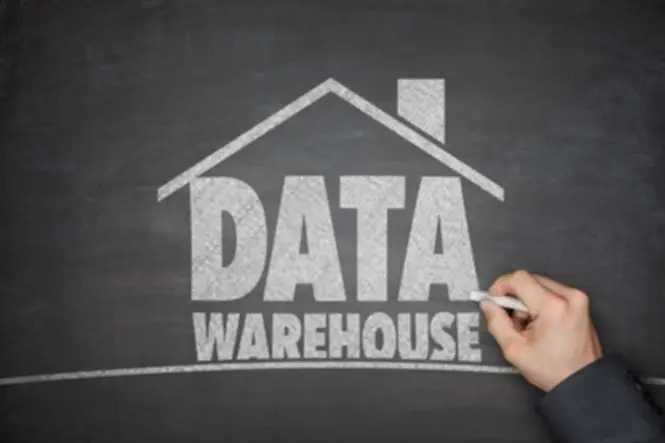In parallel, what has additionally elevated is the quantity of bandwidth that they eat. The sheer volume of information generated from these devices impacts a company’s personal cloud or knowledge middle, making it tough to manage and retailer all the information. Edge computing is a distributed computing framework that enables data to be processed closer to the place it’s created. Augmented actuality (AR) tools powered by edge computing improve customer engagement by allowing users to try products virtually, such as makeup, clothes, or furnishings. This edge technique ensures real-time rendering and personalization for each buyer. As civil engineers craft urban designs, an increasing number of them are together with good cities of their planning to help drive civic innovation and elevated sustainability.
Some enterprise routers present built-in compute or the flexibility to plug extra compute modules and be used to host purposes. In this model, a single router can carry out each packet routing capabilities and provide infrastructure to host edge purposes. One of the explanations we often hear the 2 questions is as a result of edge computing can be outlined from different perspectives. We can define edge computing based on the deployment location, the capabilities that it has, the connectivity and administration mannequin it uses, and many more. These examples show how fast knowledge processing can result in improved decision-making and enhanced user experiences. Smart properties rely on IoT devices collecting and processing information from around the house.
- Gartner predicts that 50% of enterprise-generated knowledge might be created and processed past centralized cloud data facilities via edge computing by the 12 months 2022.
- Nonetheless, in edge computing architectures, these edge gadgets don’t have any direct interplay with the data middle.
- Hardened edge computers maintain kiosk machines only 24/7 regardless of difficult environmental conditions.
- 2019 is predicted as the year of edge expertise and can remain so in the coming years.
Edge computing works by bringing computation and storage nearer to the producers and shoppers of knowledge. Edge deployments range for different jira use cases, however can be grouped into two broad classes. If a production incident makes it unsafe for that robotic to maintain working, it must obtain that info as quick as possible so it could possibly shut down. These purposes result in more efficient city operations and higher useful resource allocation. Edge computing might be a core expertise in more widespread adoption of sensible grids and may help permit enterprises to higher manage their energy consumption.
Relying on how much data your business sends and processes, this could considerably save operating prices. Edge computing enables augmented reality tools like IKEA’s AR app to deliver immersive and interactive experiences. By processing knowledge locally on an edge gadget, users can visualise how furniture matches of their properties with out delays.

The Future Of Edge Computing: Micro Information Centers Are Redefining Security And Sustainability

In this article, you’ll uncover varied edge computing examples that illustrate its sensible purposes and benefits. Whether Or Not it’s smart cities optimizing site visitors circulate or industrial IoT gadgets monitoring tools well being, edge computing is driving innovation like by no means earlier than. Be A Part Of us as we explore compelling use circumstances that highlight the power of edge computing and why it issues for the future of technology. Edge computing is the processing and computing of client https://www.globalcloudteam.com/ data nearer to the info source somewhat than a centralized server or a cloud-based location. At its simplest, edge computing brings computing sources, information storage, and enterprise purposes nearer to the place the folks really devour the information.
Edge Computing: Unlocking Next-level Internet Efficiency
To further understand the advantages of mobile edge computing, we’ll use latency as a benchmark and evaluation how it influences the 5 C’s of latency (connection, closeness, capacity, competition, and consistency). Capability is another essential differentiator in opposition to many of the different edge computing fashions. With the ability to host numerous compute situations similar to Graphical Processing Items, the mobile edge supplies a scalable edge infrastructure.
Edge computing could be teamed with artificial intelligence and machine learning tools to derive enterprise intelligence and insights that helps employees and enterprises perform more productively. Edge computing helps by bringing the processing and storage of information nearer to the equipment. This enables IoT sensors to observe machine health with low latencies and carry out analytics in real-time.
As A Outcome Of rugged edge computers are hardened, they can be deployed in oil and fuel fields where the temperatures typically reach and barely exceed 50°C without operating into thermal points similar to thermal throttling. Rugged edge computing options can be used to monitor the large variety of property deployed in the fields to ensure that oil and gasoline manufacturing facility runs smoothly with out interruptions to subject operations. Rugged edge computer systems are used to monitor the performance and control the oil production course of. Rugged edge computers are often deployed in fleet vehicles, permitting organizations to intelligently administration their vehicle fleets. Rugged edge PCs can faucet into the CANBus community of automobiles, amassing a selection of rich info, similar to mileage per gallon, car pace, on/off standing of auto, engine speed, and lots of different related information.

Typical components in an edge computing system include IoT sensors, native processing items (e.g., Edge IoT Gateways), and orchestration platforms that handle connectivity, provisioning, and remote entry. In Accordance to the Gartner Hype Cycle 2017, edge computing is drawing nearer to the Peak of Inflated Expectations and will doubtless reach the Plateau of Productivity in 2-5 years. Considering the ongoing research and developments in AI and 5G connectivity applied sciences edge computing examples, and the rising demands of smart industrial IoT purposes, Edge Computing may attain maturity quicker than expected. In addition to low latency, the advantages of edge computing embrace reliability, information transfer efficiency, real-time analytics and enhanced data privacy. The mixture of near-zero latency with edge computing permits companies that needed to be run on devices to be moved to the cloud, leading to faster deployment and cost savings.
Edge computing addresses this challenge by shifting data processing nearer to where knowledge is generated—at the edge of the community. 1) Inconsistent network access in remote or cell environments could make it hard to replace or control edge gadgets. Edge Computing is often praised for its capacity to function with limited web, however connectivity is still a challenge. It is difficult particularly when syncing with the cloud or managing edge gadgets remotely. Sending giant volumes of data backwards and forwards between devices and the cloud can strain network bandwidth.
The modern idea of Edge Computing, involving real-time native information processing, gained momentum in the 2010s with IoT advancements. “Edge computing” is a type of distributed architecture in which data processing occurs near the supply of knowledge, i.e., at the “edge” of the system. This approach reduces the necessity to bounce information backwards and forwards between the cloud and device while maintaining consistent efficiency. At first look, edge computing might look like the more advantageous know-how.
You can use a cloud computing service to run latency-sensitive portions of your software native to endpoints and sources in a particular geography. In retail, point-of-sale systems make the most of edge computing to handle transactions swiftly, ensuring a seamless customer experience whereas safeguarding sensitive knowledge. Healthcare additionally leverages edge computing by way of distant affected person monitoring methods. Devices analyze health metrics on the source, enabling timely interventions with out excessive delays. Edge computing processes data close to its source, enhancing performance and minimizing latency.




